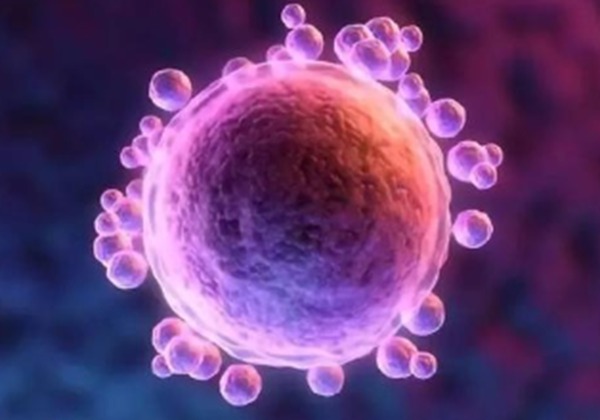吉尔吉斯斯坦代孕是用谁的卵子?

代孕是一种帮助那些无法自行生育的人拥有孩子的方式。有时,一位女性会为其他人或夫妇怀孕并生下孩子。这被称为代孕。但谁提供了用于制造婴儿的卵子呢?这就是本文要讨论的内容。我们将用简单的语言解释一切,以便每个人都能理解。
谁提供代孕中的卵子?
在代孕过程中,使用的卵子来源直接决定了婴儿的生物学关系以及法律和情感上的复杂性。根据具体情况,卵子可以来自以下三种主要来源:意向母亲、捐赠者或代孕母亲自身 。
1. 意向母亲的卵子
如果意向母亲拥有健康的卵子但因身体原因无法怀孕,则可以选择使用自己的卵子进行代孕。这种情况下,卵子通过体外受精(IVF)技术与意向父亲的精子结合,形成胚胎后植入代孕母亲的子宫中 。这种方式使婴儿与意向母亲有直接的基因联系,从而确保了生物学上的亲子关系。这种方法在意向母亲身体健康且具备优质卵子的情况下较为常见,特别是在那些希望保持遗传联系的家庭中 。
然而,使用意向母亲的卵子也存在一定的限制。例如,随着年龄增长,女性卵子的质量和数量可能会下降,这可能导致受孕成功率降低 。因此,对于高龄女性或患有某些生殖疾病的女性来说,这一选择可能并不适用。
2. 捐赠者的卵子
当意向母亲无法提供自己的卵子时,通常会依赖于卵子捐赠者。卵子捐赠是一种合法且广泛接受的辅助生殖方式,捐赠者的卵子经过严格筛选后被用于体外受精过程 。这些卵子可以与意向父亲的精子或捐赠精子结合,形成胚胎后再植入代孕母亲的子宫中 。由于捐赠者的卵子质量通常较高,这种方法能够显著提高成功妊娠的概率。

卵子捐赠尤其适合以下人群:
- 年龄较大、卵巢功能衰退的女性;
- 因疾病导致无法产生健康卵子的女性;
- 同性男性伴侣或单身男性希望通过代孕实现生育愿望的情况 。
尽管如此,采用捐赠卵子意味着婴儿与意向母亲之间没有直接的基因联系,这可能对一些家庭造成心理上的挑战。因此,在选择捐赠卵子前,建议意向父母充分了解相关伦理和情感问题 。
3. 代孕母亲的卵子
在传统代孕模式下,代孕母亲会使用自己的卵子来孕育婴儿。这意味着她不仅是婴儿的“代为孕育者”,同时也是其生物学母亲 。在这种情况下,婴儿与代孕母亲之间存在直接的基因联系,这往往会引发一系列复杂的法律和情感问题。例如,代孕母亲可能会因为基因联系而对婴儿产生依恋感,甚至可能出现争夺抚养权的情况 。
此外,许多国家和地区出于伦理和法律风险的考虑,已经禁止或严格限制传统代孕的实施。例如,在印度和部分欧美国家,法律规定代孕母亲不得使用自己的卵子,以避免潜在的纠纷 。因此,传统代孕如今已非常罕见,仅在少数地区仍有实践。
传统代孕:使用谁的卵子?
在传统代孕中,代孕母亲使用自己的卵子。这意味着她是婴儿的生物学母亲 。这一类型的代孕是最古老的形式之一,其过程相对简单且成本较低。具体来说,婴儿是通过代孕母亲的卵子和意向父亲的精子结合而成。这种结合通常通过一种称为人工授精的方法完成。人工授精可以是自然方式进行(如性交),也可以通过医疗手段(如将精子注射到代孕母亲的子宫内)完成。由于使用了她的卵子,代孕母亲与婴儿有直接的生物学联系,这使得她在法律和情感层面上都与孩子密切相关。
为什么传统代孕较少见?
尽管传统代孕曾经是一种常见的辅助生殖方式,但它如今已逐渐被淘汰,主要原因包括以下几点:
- 法律问题:由于代孕母亲是婴儿的生物学母亲,这可能导致复杂的法律纠纷。例如,在某些司法管辖区,代孕母亲可能被默认为孩子的合法母亲,即使她仅仅是“代为怀孕” 。这种法律上的不确定性增加了家庭的风险。
- 情感风险:代孕母亲可能会因为婴儿是她的亲生孩子而产生强烈的依恋感。这种情感纽带可能使婴儿在出生后难以顺利移交给意向父母,甚至可能导致冲突或争议 。
- 伦理问题:许多人认为,让代孕母亲同时承担生育和基因提供者的角色会破坏正常的亲子关系结构。代孕母亲既是孩子的生物学母亲,又是“出租子宫”的一方,这种双重身份容易引发伦理争议 。
因此,随着医学技术的进步和人们对法律、伦理问题的认识加深,传统代孕逐渐被更先进的妊娠代孕所取代。

妊娠代孕:使用谁的卵子?
在妊娠代孕中,代孕母亲不使用自己的卵子。相反,卵子来自意向母亲或卵子捐赠者 。这种类型的代孕是目前最常见的方式,因为它避免了传统代孕中的许多法律和情感问题。
妊娠代孕的工作原理
妊娠代孕的核心技术是体外受精(IVF)。整个过程分为以下几个步骤:
- 卵子采集:从意向母亲或卵子捐赠者体内提取健康的卵子。如果意向母亲无法提供卵子,则可以选择匿名或已知的卵子捐赠者 。
- 精子采集:收集意向父亲或精子捐赠者的精子。这一过程可以通过自然排精或医疗手段完成。
- 胚胎创建:在实验室中,科学家将卵子和精子结合,形成一个或多个胚胎。这些胚胎经过严格筛选,以确保它们具有较高的健康质量。
- 胚胎移植:选择最优质的胚胎,并将其植入代孕母亲的子宫。代孕母亲随后通过怀孕过程将胚胎发育成婴儿。
在整个过程中,代孕母亲与婴儿没有任何基因联系,因为她并未提供卵子 。这种安排极大地减少了法律和情感上的复杂性。
为什么妊娠代孕更受欢迎?
妊娠代孕之所以成为主流,主要有以下几个原因:
- 无法律纠纷:由于代孕母亲与婴儿没有基因联系,法律上更容易认定意向父母为孩子的合法监护人。这减少了因亲子关系模糊而导致的争议 。
- 情感风险较低:代孕母亲对婴儿的情感依附通常较弱,因为她并非孩子的生物学母亲。这使得婴儿在出生后更容易移交给意向父母 。
- 更好的技术保障:体外受精技术的进步使得妊娠代孕更加安全和可靠。通过严格的医疗筛查和胚胎选择,妊娠代孕的成功率显著提高 。
此外,妊娠代孕还为更多人群提供了生育的可能性。例如,年长女性、同性伴侣或因健康原因无法自行怀孕的夫妇,都可以通过这种方式拥有自己的孩子。
妊娠代孕的伦理和法律挑战
尽管妊娠代孕解决了传统代孕中的许多问题,但它仍然面临一定的伦理和法律挑战。例如:
- 商业化争议:一些人认为,妊娠代孕可能被商业化,导致代孕母亲被剥削或利用 。
- 家庭结构的变化:当卵子或精子来自捐赠者时,孩子的生物学父母可能与意向父母不同,这可能引发关于身份认同的问题 。
- 法律差异:不同国家和地区对妊娠代孕的法律规定各不相同。有些地方完全禁止代孕,而另一些地方则允许在特定条件下进行 。
尽管如此,妊娠代孕因其安全性、成功率高和法律清晰度高等优势,仍然是当今最受欢迎的代孕形式。

体外受精在代孕中是如何工作的?
体外受精(IVF)是妊娠代孕的核心技术,其目的是在实验室中创造胚胎并将其植入代孕母亲的子宫 。具体过程包括四个主要步骤:首先,从意向母亲或卵子捐赠者那里提取卵子;其次,收集意向父亲或精子捐赠者的精子样本;第三,在实验室中将卵子与精子结合,使其受精并发育成胚胎;最后,医生将健康的胚胎移植到代孕母亲的子宫中,以完成妊娠过程 。这种方法的最大优势在于,代孕母亲与婴儿没有基因联系,从而减少了法律和情感上的复杂性 。
代孕中的法律考虑
代孕涉及复杂的法律问题,尤其是在父母权利认定方面。在妊娠代孕中,由于代孕母亲与婴儿无基因联系,意向父母通常会被直接认定为合法父母 。然而,在传统代孕中,由于代孕母亲使用自己的卵子,婴儿与她有生物学联系,因此可能需要通过收养程序来转移父母权利 。此外,无论哪种类型的代孕,都需要签订详细的法律合同,以明确各方的权利和义务,避免未来可能出现的纠纷 。
代孕中的伦理问题
代孕引发了许多伦理争议。首先是剥削问题,一些人担心代孕母亲可能因经济压力而被迫参与代孕 。其次是情感影响,代孕母亲可能对婴儿产生依恋,而意向父母也可能面临心理压力 。此外,宗教观点也对代孕持不同态度,某些宗教认为代孕违背自然规律,因而不被接受 。这些伦理问题使得代孕在全球范围内仍存在争议,需要更完善的法律和道德框架来规范。
关于代孕的统计数据
关于代孕的统计数据与分析
代孕作为一种辅助生殖方式,近年来在全球范围内受到越来越多关注。根据现有数据,代孕主要分为两种类型:传统代孕和妊娠代孕。以下是详细的统计数据与分析:
代孕类型的分布
| 代孕类型 | 案例百分比 |
|---|---|
| 传统代孕 | ~10-15% |
| 妊娠代孕 | ~85-90% |
从表格中可以看出,妊娠代孕占据了绝大多数案例(约85-90%),而传统代孕仅占10-15% 。这种分布反映了现代技术的进步以及人们对法律和情感风险的考量。
卵子捐赠的比例
在妊娠代孕中,约30-40%的案例使用了捐赠者的卵子 。这一比例表明,许多意向父母由于年龄、健康状况或其他原因无法使用自己的卵子,因此依赖于捐赠者。这种选择不仅扩大了代孕的适用范围,也为更多家庭带来了生育的希望。
综上所述,代孕市场的趋势和技术发展正在不断优化,为意向父母提供了更多的选择和保障。

关于谁的卵子用于代孕的常见问题
以下是关于“谁的卵子用于代孕”的一些常见问题及其深入解答:
- 问:代孕母亲是生物学母亲吗?
答:这取决于代孕的类型。在传统代孕中,代孕母亲使用自己的卵子,因此她与孩子有生物学上的联系,成为孩子的生物学母亲 。然而,在妊娠代孕中,代孕母亲并未提供卵子,胚胎由意向父母或捐赠者的卵子和精子结合而成,因此代孕母亲与孩子没有基因关系 。这种区别对法律和情感层面都有重要影响。 - 问:代孕中可以使用捐赠者的卵子吗?
答:是的,在妊娠代孕中,捐赠者的卵子经常被使用。当意向母亲无法提供健康卵子时,会选择卵子捐赠者来帮助形成胚胎 。这种方式确保了孩子与意向父母一方或双方可能存在的基因联系,同时避免了代孕母亲的生物学参与。 - 问:谁决定使用谁的卵子?
答:这一决定通常由意向父母根据自身情况作出,并在医学专家和法律顾问的指导下完成 。例如,如果意向母亲有健康的卵子,则优先使用她的卵子;如果不可行,则会考虑捐赠者的卵子。所有选择都需要符合法律规定,并确保各方权益得到保护。
结论
代孕帮助那些无法自行生育的人拥有孩子。代孕的类型决定了使用谁的卵子。在传统代孕中,代孕母亲使用自己的卵子。在妊娠代孕中,卵子来自意向母亲或捐赠者。妊娠代孕更为常见,因为它风险较小且法律问题较少 。
如果你想了解更多关于代孕的信息,请咨询生育诊所或代孕机构。他们可以帮助你了解你的选择,并为你和你的家庭做出最佳决策。




